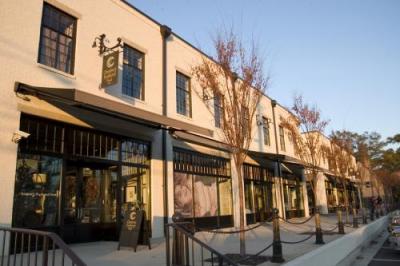
CNU Joins Call for Action on Fannie Mae and Freddie Mac
In addition to fiscal problems, mortgage giants have policies that cause them to avoid supporting lending in mixed-use buildings in revitalizing neighborhoods
Submitted on 01/28/2010. Tags for this image:
Warning: Table './archive_cnu/watchdog' is marked as crashed and should be repaired query: INSERT INTO watchdog (uid, type, message, variables, severity, link, location, referer, hostname, timestamp) VALUES (0, 'php', '%message in %file on line %line.', 'a:4:{s:6:\"%error\";s:7:\"warning\";s:8:\"%message\";s:39:\"Invalid argument supplied for foreach()\";s:5:\"%file\";s:100:\"/var/www/archive.cnu.org/htdocs/sites/cnu.civicactions.net/themes/cnu/node-content_news_item.tpl.php\";s:5:\"%line\";i:27;}', 3, '', 'http://archive.cnu.org/cnu-news/2010/01/cnu-joins-call-action-fannie-mae-and-freddie-mac', '', '18.219.253.199', 1732408579) in /var/www/archive.cnu.org/htdocs/includes/database.mysql.inc on line 135
Leaders of the Congress for the New Urbanism (CNU), a leading planning and development reform agency focused on walkable, livable and economically vital communities, joined the calls today to replace — or at least seriously reform — the bailed-out government-backed mortgage agencies Fannie Mae and Freddie Mac. In addition to demanding improved fiscal management, CNU leaders say the new programs must scrap policies that led the mortgage giants to have a poor record supporting lending along Main Streets, in downtowns and in other revitalizing mixed-use neighborhoods in cities, suburbs, and small towns. Instead, Fannie Mae and Freddie Mac wound up being far more active in overheated mortgage markets in far-flung exurban subdivisions, where speculation and high transportation costs have been linked to the popping of the housing bubble and more steep drops in housing values.
Just days ago, House Financial Services Committee Chair Barney Frank called Fannie Mae and its sister government-backed mortgage agency Freddie Mac "failed programs" that should be replaced with a new approach to Federal involvement in mortgage lending.
While echoing Frank in concern over the lending agencies' ongoing insolvency, which has required a $110 billion infusion from taxpayers to keep them in operation, representatives of CNU said that Fannie Mae and Freddie Mac have had an even worse impact when it comes to their lending record in revitalizing neighborhoods in cities, suburbs and small towns. "It's about time someone woke up and realized Fannie and Freddie do more harm than good," said Sam Sherman, a CNU board member and a Philadelphia developer who specializes in revitalizing urban neighborhoods.
The problem with both Fannie Mae and Freddie Mac stems from long-standing policy and practice that lead them to avoid involvement in the mixed-use buildings, with housing above either shops or offices, that are the mainstay of commercial development from small-town main streets to the loft districts and live-work-play hubs of major urban centers. While developers and customers alike have been rediscovering these areas, Fannie Mae's and Freddie Mac's rejection of them works to put these areas at a competitive disadvantage and to worsen the effects of the recession in them as well. Fannie Mae and Freddie Mac will not support financing in developments that have more than 20% commercial use, effectively barring them from large swaths of the residential market in walkable neighborhoods.
"Fannie Mae and Freddie Mac enforce rules that have made Main Street almost impossible to build in America," said CNU President and CEO John Norquist. "Their rules make retail with apartments above a prohibitive practice. Every Main Street in America violates Fannie Mae's and Freddie Mac's rigid standards. There are also plenty of mixed-use streets in lower- and moderate-income neighborhoods of cities where Fannie and Freddie have little to no involvement. These neighborhoods often have impressive purchasing power, transit-service and the potential to be sites of new opportunity and green redevelopment, but this flawed government-subsidized lending approach works to keep them locked in a pattern of disinvestment."
In Washington yesterday, Norquist met with aides to Congressman Frank and shared with them recommendations for either seriously reforming Fannie and Freddie or creating successors to the mortgage giants. Be sure to scrap the ban against mortgage support for many mixed-use buildings, Norquist advised, and instead create incentives for the successor programs to encourage lending in walkable "location-efficient" areas where research shows residents save on transportation costs and development generates both long-term value and fewer negative environmental impacts. The "Driven to the Brink" report by economist Joe Cortright for CEOs for Cities concluded that high-transportation costs in exurban locations helped pop the housing bubble and subsequent reports, including an examination in the New York Times this month, have found evidence that more centrally located walkable neighborhoods have retained a greater share of housing value during the recession. Removing the Fannie Mae and Freddie Mac restrictions would help these neighborhoods stage an even stronger comeback and would ultimately encourage sound long-term growth in real estate markets.
Steve Maun, a developer who retrofits suburban and small-town neighborhoods lauded Frank for saying what many people are starting to realize that that the two quasi-governmental mortgage agencies are an obstacle to sustainable and profitable real estate development. Maun, who heads the National Town Builders Association in addition to being a CNU board member, called on the Obama administration to convene a task force to chart a new course or to just abolish or phase out Fannie Mae and Freddie Mac.
Todd Zimmerman, a mixed-use development consultant said "the Secondary Mortgage Market's quasi-public gatekeepers' bias against mixed-use buildings is a vestige of shameful government intervention in, and influence on, housing market forces that goes back to the racist and anti-urban regulations of the early FHA. Prudent underwriting requires a clear understanding of the sometimes complex dynamics of mixed-use buildings. A mere percentage limitation of non-residential uses is simplistic and has the unintended result of increasing debt service costs on the private sector real estate assets that anchor the efficient and sustainable neighborhoods envisioned by the new coordination of HUD, DOT and EPA."
For immediate release, January 28, 2010
For more information, contact John Norquist, 312-551-7300, x14 (jnorquist@cnu.org) or Stephen Filmanowicz, 312-927-0979 (sfilmanowicz@cnu.org).

